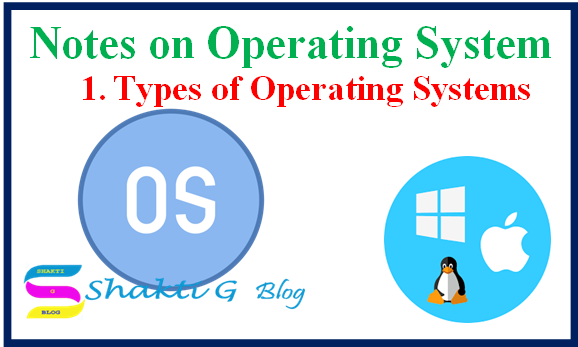Types of Operating systems
All of this history and development has left us with a wide variety of operating systems, not all of which are widely known let’s start with types of operating systems.
Mainframe Operating Systems:
A mainframe with 1000 disks and thousands of gigabytes of data is not unusual. Mainframes are normally used as web servers, servers for large-scale electronic commerce sites, and servers for business-to-business transactions. The operating systems for mainframes are heavily oriented toward processing many jobs at once, most of which need heavy amounts of I/O. They typically offer three kinds of services: batch, transaction processing, and timesharing.
A batch system is one that processes routine jobs without any interactive user present. A claim processing in an insurance company or sales reporting for a chain of stores is typically done in batch mode. Transaction processing systems handle large numbers of small requests; for example, check processing at a bank or airline reservations. Each unit of work is small, but the system must handle hundreds or thousands per second. Timesharing systems allow multiple remote users to run jobs on the computer at once, such as querying a big database. These functions are closely related: mainframe operating systems often perform all of them. An example mainframe operating system is OS/390, a descendant of OS/360
Real-Time Operating Systems:
Another type of operating system is the real-time system. These systems are characterized by having time as a key parameter. For example, in industrial process control systems, real-time computers have to collect data about the production process and use it to control machines in the factory. Often there are hard deadlines that must be met. For example, if a car is moving down an assembly line, certain actions must take place at certain instants of time, if a welding robot welds too early or too late, the car will be ruined. If the action absolutely must occur at a certain moment (or within a certain range), we have a hard real-time system.
Another kind of real-time system is a soft real-time system, in which missing an occasional deadline is acceptable. Digital audio or multimedia systems fall in this category.
Personal Computer Operating Systems:
The job of a personal computer operating system is to provide a good interface to a single user. They are widely used for word processing, spreadsheets, Internet access, etc. Personal computer operating systems are so widely known to the people who use computers but only a few computer users know about other types of operating systems. Common examples of PC operating systems are Windows 2008, Windows 2007, the Macintosh operating system, Linux, Ubuntu, etc.
Server Operating Systems:
Server operating systems run on servers, which are very large personal computers, workstations, or even mainframes. They serve multiple users at once over a network and allow the users to share hardware and software resources. Servers can provide print service, file service, or Web service. Internet providers run many server machines to support their customers and Web sites use servers to store the Web pages and handle the incoming requests. Some Examples of typical server operating systems are UNIX and Windows 2007 server, Sun Solaris, etc.




